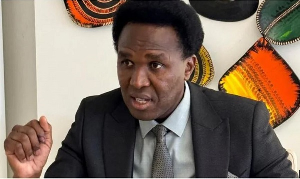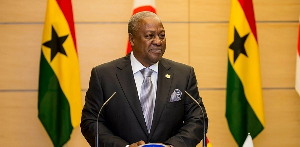The International Monetary Fund and the World Bank have predicted steep financing shortfalls in countries that have prepared Poverty Reduction Strategy Papers (PRSPs).
A Review by the two Bretton Woods institutions was very critical of the first completed PRSPs, noting that none of them included contingencies in the event of financing shortfalls.
Even though the Review did not state the countries involved, it noted that this would arise out of the pain of declining aid and unfavourable trade terms that have eroded the earning power of many African exports.
"The presentation of a set of priority actions that are not yet fully financed and without contingency plans is a risk to the achievement of poverty reduction objectives," the study stressed.
Ghana, like a host of other African countries has recently prepared PRSPs aimed at helping to reduce poverty, especially from and at the ruralareas.
Significantly, many PRSPs according to the Review did not contain explicit pro-poor growth strategies. It observed that the amount of debt payments to be saved under the Highly Indebted Poor Countries (HIPC) Initiative would be smaller than predicted, hampering spending on poverty alleviation measures and programmes. Indeed, the level of the savings were determined on the basis of uncertain projections about economic growth and export earnings, especially since world prices have been falling for primary commodities, which accounted for the bulk of Sub-Sahara Africa's exports.
The World Bank noted that even though PRSPs depended on money saved from repayments, "they also draw heavily from the general government budget. And financing problems were exacerbated when these budgets are highly dependent on external sources of funding.
"When this happens and as usually donor financing are often not sustained, governments are forced to constantly revise their PRSP targets."
In Uganda, about 53 per cent of the national budget comes from external sources and in Ghana the figure is quite substantial. The Bank and the IMF say they expected that the conditions of the poor would be improved through increased government spending in sectors such as education, health and rural infrastructure. They said average spending on poverty reduction was estimated to increase from 7.7 per cent of GDP to 10.2 per cent between 1999 and 2002 in a sample of seven countries that completed their PRSPs.
"Another aspect missing in many PRSPs is the need for strategies to deal with the growing social and economic threat posed by HIV/AIDS, saying that in at least 10 low-income countries, one-third of all adults carry the HIV virus and sadly, early PRSPs were not fully successful in capturing the seriousness of the threat or the link between poverty and AIDS."
Click to view details



Business News of Sunday, 4 May 2003
Source: Public Agenda
















